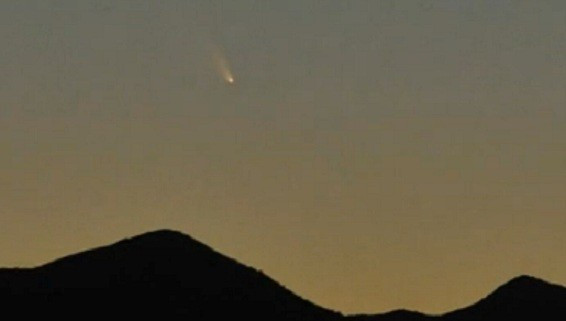Comet Pan-STARRS Video Shows Tail As it Streaks Through Space [VIDEO]

Video of the comet Pan-STARRS shot by a Nasa boffin shows the space rock streaking across the sky in all its glory.
Spotting comet Pan-STARRS has not been so easy in the skies over Great Britain since it appeared in the northern hemisphere.
A wall of wind and snow have plunged the nation into the deep freeze and obscured any potential view of the comet in the celestial firmament.
Frustrations were compounded by the fact that Pan-STARRS may not be visible from earth again for a million years - if ever.
Click here for how to get the best chance of spotting comet Pan-STARRS.
Footage by scientist Fred Espenak in the United States shows sky gazers in Blighty what they are missing.
Espenak trekked to the remote Dos Cabezas mountains in Arizona where there is far less light pollution than in the UK.
His video captures the beauty of the comet by showing its tail as it burns majestically in the heavens on its unending orbit of Helios - our own Sun.
It is believed that spotting the Pan-STARRS comet will become easier from today (13 March), but a clear sky is still required.
It gets its unusual name from the telescope in Hawaii through which it was first spotted in 2011.
Born millions of years ago in a giant cloud of dust called the Oort Cloud which rings the solar system, Pan-STARRS will appear in the skies for the first time since telescopes on Earth made a sighting. It has been travelling for millions of years to the inner solar system from its cradle in the cloud.
© Copyright IBTimes 2025. All rights reserved.




















